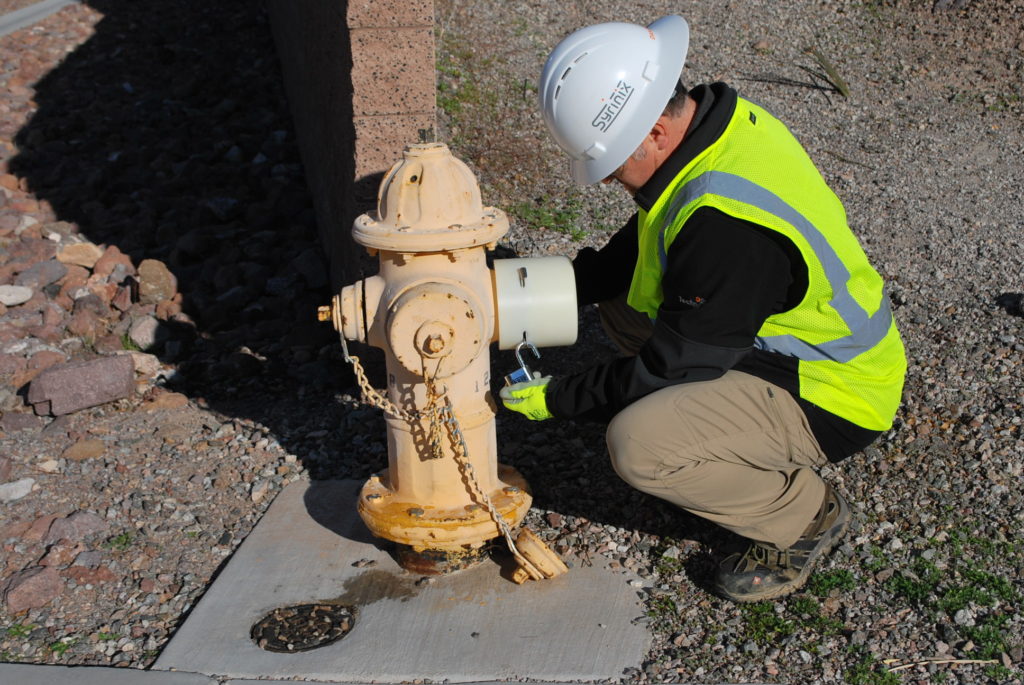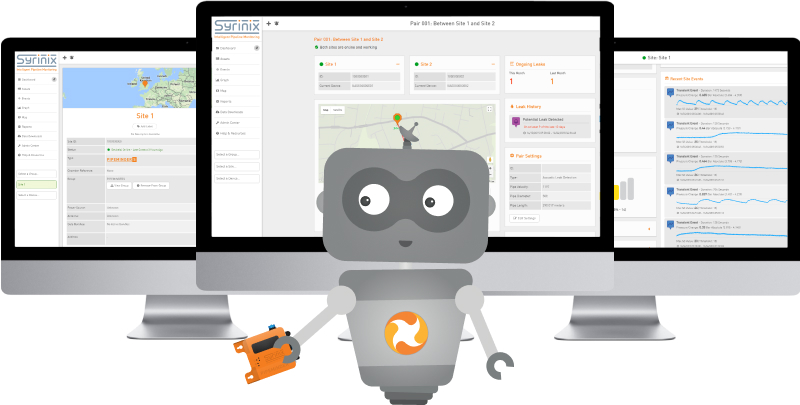Industry trends - Q&A with CEO James Dunning
Calming the network
Q: Can you tell us about Syrinix?
Syrinix is, at its heart, a data technology company. Although we started as a research company out of university, we have evolved to be very focused on delivering data-led pipeline monitoring solutions that water utilities require.
Our mission is to deliver a solution for each individual utility for its unique requirements.
Our aim and our goal is to help them with their decision making, providing new insights as they address the myriad of challenges they now face
Q: What does “intelligent pipeline monitoring” mean?
The tagline we've always used for Syrinix is intelligent pipeline monitoring. And to my surprise, it's acted as more of a guide for what we do than I'd expected. What it means is we're focused on the data, we’re focused on the insights, we’re focused on helping utilities better understand their pipeline networks.
If you have data, you remove the subjectivity that is otherwise part of every human discussion. In fact, you actually raise the whole level of discussion to one based on what is actually happening, rather than just sort of a hunch based on what has happened before.
Q: Syrinix is widely known in the UK. Can you tell us about your work there?
Over the last few years, the utilities in England and Wales in particular have changed beyond all expectations. Previously, there had been a very consistent capital-investment led regulatory regime, but now it’s almost completely oriented around customer expectations. Rather than a financially-driven regulatory structure, it's now about interruptions to supply and fewer polluting events. It's about the quality of service and the reliability of the service that customers receive.
In terms of how we've helped utilities, we’ve worked with Thames Water, which has fifteen million customers, including central London and a huge area to the west of London as well. When a major transmission pipe fails in central London, it costs tens of millions of pounds and can create huge disruption; for everyone concerned, that is an unacceptable event. So, merely reacting to bursts is not an option.
Our technology enables the teams to monitor those critical transmission lines across central London. So, if a tiny leak appears, we tell them where it is so that they can monitor it and repair it before it becomes a failure. If you can find that small leak, if you can get non-intrusive data monitoring all day every day, it allows you to be ahead of the game and to avoid any impact on customers by fixing the leak without anyone even noticing.
This high-resolution monitoring is now at the heart of how critical infrastructure is managed; it’s a real game changer.
Q: What similarities are there between the UK and the US water markets?
Where the markets are increasingly similar is that expectations – whether political or societal or legislative or regulatory – are changing, particularly where climate change and drought has been a problem. Not just in Brazil and South Africa, but closer to home in California and Texas, drought and conservation are real issues impacting day to day living.
The challenge is that business as usual can't deliver what is now expected and required. Business as usual is no longer sufficient. And our aim is to help utilities address these challenges, to help utilities evolve beyond business as usual, as many are already doing, to include new data-led ways of working.
Q: So, what are some challenges the US water industry faces right now?
The US is home to a lot of innovation, but also, just through geography, has a host of different challenges. When you filter through all of it, the basic challenges are the same on the East Coast, the West Coast, the Midwest, in Texas…pretty much everywhere. It's that society's expectations of what the water companies are delivering is increasing.
Over on the East Coast, significantly aging infrastructure in old cities is becoming a real challenge whilst on the West Coast, utilities are facing increasing regulatory and legislative pressures. In the past, a lawn on the West Coast may have been a source of pride and joy, but is it today?


Q: How does Syrinix work with US utilities?
When working with utilities, the most important thing to do is to gain and maintain their trust.
They have lots of companies knocking on their doors saying, “we can do this,” and “we can do that,” but delivering safe water every day is not something to be experimented on lightly.
Our business model is to start small with utilities and go from there.
One of our major West Coast utility customers for instance started with a small deployment and today they have over a hundred units deployed across their network.
Cobb County in Georgia again started with a small number of units and now they're monitoring their entire main network.
Missouri America has units deployed on the network providing very regular monitoring of what is happening. It's about data-led, high-resolution insights to change the way they're managing their networks.
What we are increasingly seeing is that sometimes the way a utility is operating its network can inadvertently be the cause of some of their problems.
For example, the way pumps operate and the way valves operate can cause a lot of pressure spikes. And if you have pressure spikes on a corroded pipe, you can accelerate the failing of that pipeline. But if you don't have reliable, effective monitoring, you have no idea that's going on.
With Syrinix technology, we provide that data-led insight and the triangulation and identification of the source of those challenges, so utilities can then adjust the pumps and make sure the valves are operating properly.
Q: What do you see as the most urgent problem facing U.S. utilities today?
The biggest challenge across the country is aging infrastructure coupled with environmental pressures.
Society's expectations of the water utility are changing - it doesn't matter how or why, whether due to price increases or regulation or concerns about the environment.
Water – especially water scarcity - is a topic in the public consciousness in a way it wasn't five years ago and that brings the state of aging infrastructure into very sharp focus. You can't afford to replace all of it. There's significant federal funding coming through, but you can't do everything right now.
The question becomes how can you extend your asset lifetimes and reduce leaks and bursts whilst also meeting those increasing performance expectations?
Water utilities across the country have to respond to that challenge and our role, our hope and our expectation is that data is a key part of the solution.
Q: How can the water sector best address these problems?
On one of my first trips to the US, George Kunkel, then at Philadelphia Water, highlighted that there is no silver bullet solution to the challenges the water sector faces around the world. Now, I would love to be able to go back and say that the silver bullet does exist - and that we provide it - but unfortunately, George remains as right today as he was then!
Amidst all the challenges, though, there are also world-leading innovators who are able and willing to support utilities that are confronting those challenges. The challenges utilities are facing are significant, but they can be managed. The more utilities and innovators can work together, the more effective that management will be.
More Syrinix stories
Contact Us
Leave your details and we will be in touch.



